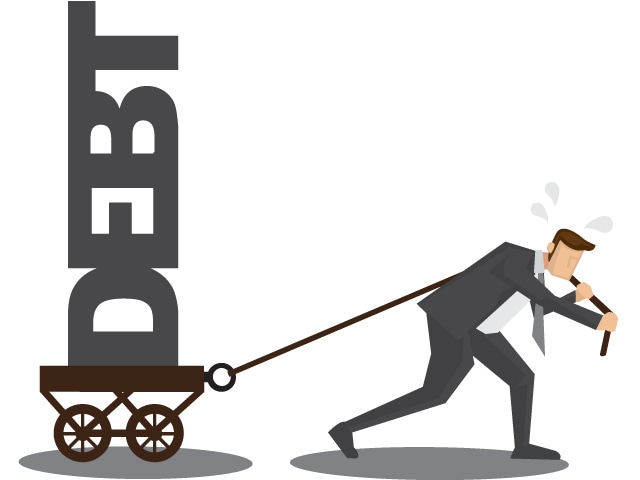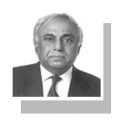By Nasir Jamal
Published in Dawn on June 12, 2023
The budget for the next financial year unveiled by finance minister Ishaq Dar on Friday will set up the country’s collapsing economy stuck in an impassable rut for another year of stagflation marked by depressed growth, high inflation, and greater and faster debt accumulation.
Mr Dar’s budget and his fiscally irresponsible spending plans are all about politics — more precisely about upcoming elections — rather than dealing with multiple longstanding structural economic challenges. His budget speech was revealing not for what he said but for what he didn’t say.
Missing from his long speech, which was focused more on the past than on the future, was the plan to get the stagnating economy through the next year and beyond it and fix its fundamental flaws.
Not a word was spoken on the crucial issue of broadening the tax base by netting the large untaxed sectors like real estate, retail or agriculture to boost revenue or privatisation of loss-making state-owned businesses that are a big drag on the nation’s meagre resources that could have been spent on health and education.
The budget doesn’t have a leg to stand on until the IMF comes on board and debt is reprofiled to reduce financing requirements
Mr Dar made it pretty clear that the PML-N has no appetite — at least for now, with the elections in sight — to make politically hard and unpleasant choices, and if it can get away with it, the good old party would like to carry on with its old ways.
He thinks the government still has enough space and time to borrow to finance his fiscal stimulus and spend its way out of the current crisis. The cost of these ‘business-as-usual’ policies in an economically challenging environment will be very heavy for the inflation-stricken public.
The budget documents show that the government is not prepared to take a break from the past and still has this illusion of reviving the nation’s broken economy and restoring its competitiveness through large, borrowed development stimulus and distribution of freebies.
The government isn’t even pretending that it needs to take tough decisions or implement unpopular reforms to fix the debt-ridden economy. The Rs14.46 trillion budget lays out a growth target of 3.5 per cent, which seems ambitious if not unrealistic due to the suppression of imports on balance-of-payments troubles amid uncertainty around the revival of the International Monetary Fund (IMF) programme ending on June 30.
The next year’s fiscal plan targets a huge 6.5pc deficit against the International Monetary Fund programme projection of 4pc on large development allocations of Rs2.7tr, energy and other subsidies of Rs1.07tr, a 17-35pc increase in pay and pension of the government employees and similar expenditure that could have been significantly slashed.
The proposed fiscal deficit target is based on an unrealistic estimate of tax revenue collection of Rs9.2tr, up by almost 28pc from the current year’s expected collection of Rs7.2tr, amid economic slowdown without broadening the tax base.
The government proposes to achieve this through additional taxation of Rs220 billion and increasing the super tax rate on corporate taxpayers. The remaining amount is planned to be generated through growth in nominal GDP, with the annualised inflation estimated to average 21pc.
The present fiscal year’s experience underscores that government revenues are unlikely to grow in line with nominal GDP growth due to stagflation. Hence, the analysts insist that the government won’t be able to meet its tax target and would be compelled to introduce new revenue measures through a ‘mini budget’ sooner than later.
On the expenditure side, no effort has been made to curtail spending as the current expenditure is estimated to clock in at Rs13.3tr, up by 53pc from the outgoing fiscal year’s outlay of Rs8.7tr.
Indeed, the major reason for this increase is a more than 77pc rise in debt servicing costs from Rs5.5tr to Rs7.3tr as the interest expense is projected to grow on higher interest rates that have surged to 21pc along with higher borrowings by the government to plug its widening fiscal deficit year after year.
Still, it was widely expected that the government would target a much lower fiscal deficit by expanding the narrow tax net and curtailing expenditure through the privatisation of loss-making public sector entities and slashing energy subsidies. However, the budget does not lay out any roadmap for this. Rather, it pledges to finance the losses of the state-owned businesses through expensive bank borrowings.
Past experience shows that the budgeted expenditure always tends to overshoot the estimates and the revenue collection remains below the budgeted targets. It means that the large, projected fiscal gap could expand significantly beyond the projected estimates and affect the government plan to achieve the primary surplus of 0.4pc of GDP against 0.5pc deficit for the current year.
Although the government has tried to balance its populist, election-related measures with the tough conditions of the IMF for the resumption of the soon-to-end $6.5bn bailout loan programme, it remains unclear if the lender will find its fiscal plan, as well as the budget deficit and primary surplus target, credible enough.
The government wants to secure part of the $2.5bn undisbursed IMF fund to calm the markets’ nervousness about increasing chances of a potential sovereign default.
With uncertainty surrounding how the government plans to manage its external account financing of $25bn next fiscal year, the budget doesn’t have a leg to stand on until the IMF comes on board and the government immediately moves towards reprofiling of its bilateral debt to reduce the financing requirements. Its reckless fiscal plan for the next financial year, however, seems to have diminished the chances of that.
Salim Raza
Former SBP governor

Let’s see if the FY24 budget satisfies the IMF and unlocks the 9th tranche of $1.1bn. If it doesn’t, appropriate adjustments should be made — continuing IMF support is critical.
Three subjects have primacy for us today, and the government’s budgetary or earlier statements have not provided us guidance on their thinking: i) early clarity on the import policy to be followed by government; ii) whether the ongoing, heavy, foreign currency debt-servicing burden can be met by presumed funding resources; and iii) the strategy for dealing with mounting public sector enterprises losses including circular debt.
The market access we had taken for granted has been curtailed. Future growth will need much greater reliance on domestic resources — agriculture and IT are examples — as well as SMEs to develop domestic supply chains to make presently imported parts, components and chemicals.
Limited reserves will compel the SBP to allocate foreign exchange for imports. The government needs a growth plan and assign import-related priorities accordingly. This must not be delayed.
The current expectation that debt servicing levels ($20bn per annum plus the current account deficit) can be met by postponing (rolling-over) maturing debt to “friendly” countries leaves us vulnerable if, at some point, rollovers are no longer possible. We need to achieve, with the IMFs consent, some agreed and contracted, medium and long-term re-arrangement of our liabilities to provide sustainable elbow room for necessary imports.
The PSE and energy sector ‘bleed’ has to be met with immediate action to stem the rot through privatisation, fresh investment, or restructuring. For FY24, the energy sector subsidy alone will approach Rs 1tr, similar in size to the PSDP — which in the past, we have consistently underspent, while budgetary losses/subsidies have only grown.
Dr Mushtaq Khan
Founder, doctored papers

To understand this budget, think of the counterfactual. What if Ishaq Dar announced serious expenditure cuts, aggressive documentation to take FBR’s revenues above 10pc of GDP, a much smaller fiscal deficit (say 4.5pc GDP), falling inflation (say 14pc average driven by austerity, and restrained GoP borrowing), a smaller debt servicing burden (by cutting interest rates), and targeted support for the poor and vulnerable.
The IMF tranche would be released ASAP (followed by fresh bilateral funds), but the electables in PML-N would jump ship to join the newly minted IPP. Then PML-N and PTI could fight it out in Punjab for second place.
We all knew this would be an election budget, but there is a further complication. The government’s term ends in mid-August, and a three-month caretaker would push the election to November. But the caretaker must be apolitical and cannot champion the handouts in this budget. Will PML-N be able to win over voters in six weeks?
With inflation and job losses overshadowing these handouts and three months of politically charged limbo, what is PML-N thinking? But then again, can anyone imagine the counterfactual?
The real issue is how the IMF reacts. There is only one scheduled board meeting in June and three prerequisites: budget, functioning FX market, and funding commitments for $6bn. If Pakistan is not going to meet two of them, why bother with an austere budget?
Dr Rashid Amjad
Professor of Economics, Lahore School of Economics

We all heard the speech by the finance minister but groped to find any real evidence of measures to revive the economy. We heard an outline of a new development paradigm (5 Es) but found no word on the binding constraint holding it back — an unimaginably high population growth rate.
Follow the well-trodden path of least resistance was its primary message. In an election year, there is something for everybody — true in the end, no one would be really pleased — or deservingly hurt!
There were scatterings of new ideas. Leading the list was a timely acknowledgement that ICT must serve as a driver of economic growth and exports and of regaining food security by channelling greater development expenditure into agriculture, given its low capital-output ratio, short gestation period and quick returns.
The sign “out of bounds” was strictly adhered to on sacred cows: no taxes on agriculture incomes, traders, or services. And the revenue targets were set to show a primary surplus to lure the IMF. If only it were so easy with a 6.5pc overall deficit.
While government employees got salary increases of 30-35pc, there was hardly an increase for the poorest of the poor under BISP or wage labourers.
But the real question remained unanswered. Will the budget get us out of the deepest economic slump in our history? This was the furthest from the finance minister’s mind as his horizon was limited to the next elections in a few months.




